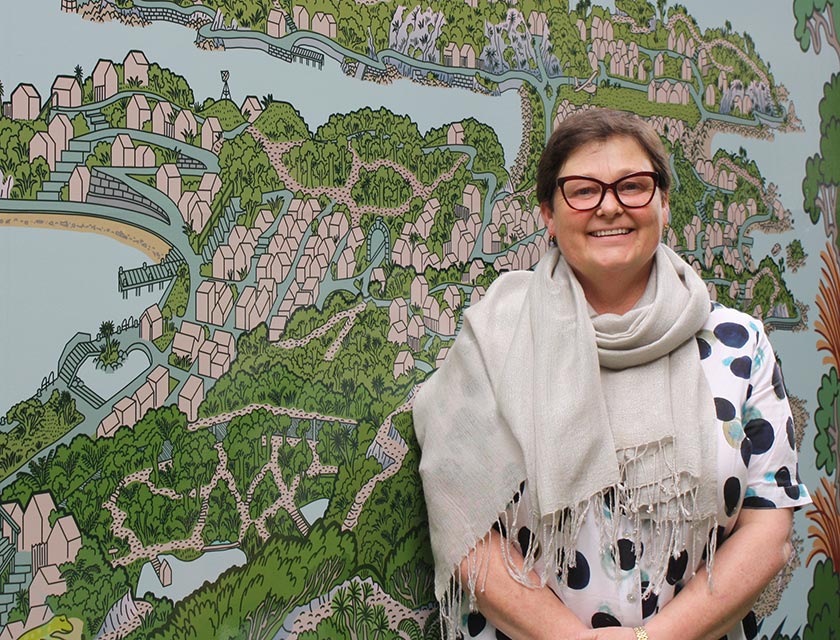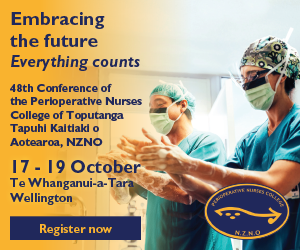“There is no room on this board for insults or putting people down or working against each other – we are going to work in union,” Symes told just over 100 NZNO members, staff and representatives on the organisation’s first AGM held via Zoom.
As the country’s biggest health union, NZNO must speak with “one voice”, said Symes, a forensic mental health nurse based in Canterbury. “We have to work together. We’re on the same journey. We’re all going in the same direction. We all have the same aims.”
Symes promised to be an honest and collaborative leader, and only communicate via official NZNO channels – “I’m not a keyboard warrior”.
“We’re going to work in harmony, we have a lot of mahi to do and we’re going forward as a group, as a union.”
She was “thrilled” to be working with vice-president Tracey Morgan (see Who are NZNO’s new board members?), whom Symes had met at her first NZNO board meeting in 2009. Morgan, and many other Te Rūnanga members seemed “shy” back then, Symes said. “But I’m glad to say they have found their voice and are not afraid to speak out now.”
All NZNO members had the right to use their democratic voice, she added, thanking those who voted. Just 6.32 per cent (3185) of NZNO’s 50,418 eligible members voted in the by-election to replace former president Grant Brookes, who resigned in April. Of those, 2140 voted for Symes and 974 for the other presidential candidate, Canterbury nurse manager Brenda Close. Three Auckland nurses, Geraldine Kirkwood, Noleen Dayal and Diane McCulloch, were elected to fill the three vacancies left when Katrina Hopkinson, Anne Daniels and Sela Ikavuka resigned in April.
Symes said she hoped to reach as many members as possible during her year in office, and acknowledged Te Tiriti o Waitangi as New Zealand’s founding document.
Te Rūnanga’s Midlands representative Tracey Morgan, who took up the vice-president’s role unopposed, agreed. “We are moving forward, we are on a journey together.” Both are only in the roles until September 2021, having filled vacancies left by two resignations during a three-year term. Morgan said both she and kaiwhakahaere Kerri Nuku had endured “ridicule” and nasty remarks on social media, but she wanted to stand up and be “freed to care, proud to nurse”.
Kaiwhakahaere Kerri Nuku said Aotearoa and NZNO had been through a difficult year. But there were opportunities for “moving past the raruraru [commotion] that we’ve had and we’ve got right now”. NZNO’s whakapapa had seen members rise up and confront challenges “head on”. From “maintaining the voice of nurses and, back then, midwives,” to developing the supply of students, NZNO “also gave us a place to stand.” Nuku said. “The important part of this is solidarity. Staying together, working things out together.”
Chief executive Memo Musa said it been a “challenging” year but there had been much good work done by nurses and NZNO to support members and strengthen relationships. Investment was needed to grow the public health nursing workforce, the system’s “backbone”.
While membership had dropped by 0.9 per cent over the year to 51,634, the trajectory still pointed to growth. NZNO was “lucky” compared to other unions, many of which were seeing a decrease or “stunted” growth, he said. College and section membership also remained strong, and was seeing some growth.
NZNO had ended the financial year with a net deficit of just over $570,000 after adjustment, mainly due to the drop in its investment portfolio in the final quarter largely due to COVID-19. Financial reserves remained “healthy”.
Musa said: “We are one profession with many different roles and many different voices. Each voice is important. We are a collective and together we can continue to make a massive influence.”




